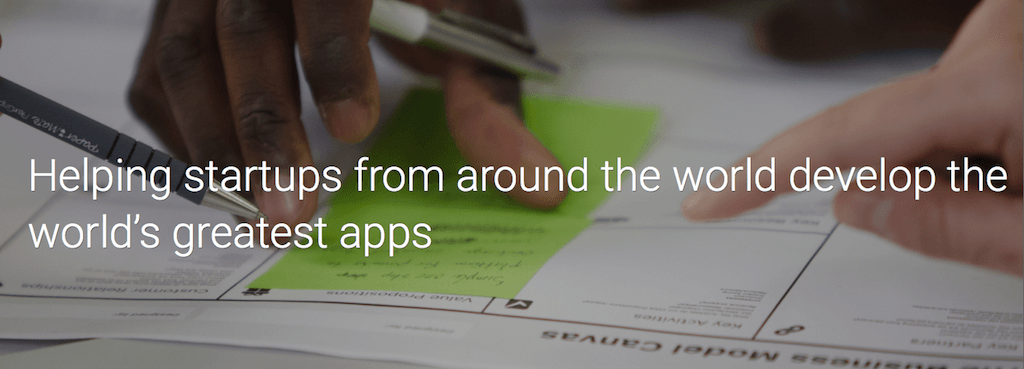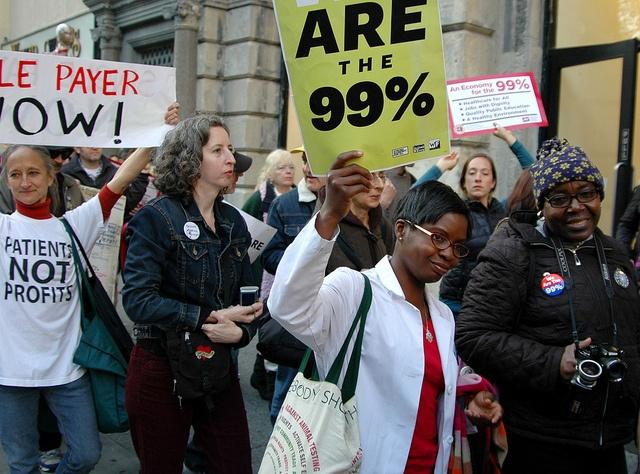Google Launches Equity-Free Accelerator Program


Google continues to prove its influence in the startup ecosystem both online and off. Late last year, the Internet behemoth announced its latest initiative — Google Developers Launchpad Accelerator -- to help startups in Brazil, India and Indonesia create mobile technology products under the auspices of famed Google know-how. In addition to equipping startup teams with top Google developers and experts, the company plans to back these newcomers with up to $50,000 each in equity-free funding.
Unlike most business accelerator programs, the access to funding with no strings attached is an innovative move — one that will help startup founders stay focused on developing well-thought products instead of concerning themselves with the responsibilities of pleasing shareholders.
Roy Glasberg, Google’s global lead for Launchpad programming, told TechCrunch that the company is looking for startup teams that have the potential to have a high impact on their local markets.
"The end goal of this program is to identify game changers in the market and be the game-changer for them,” he said. The company decided on an equity-free approach because it doesn’t want to tarnish this work with thoughts about ROI and equity.The 20 selected teams will journey to Google’s corporate headquarters in Mountain View, California, for a two-week boot camp this month (all-expenses paid for up to three members per team). There, they’ll meet and work with top developers and engineering talent for a crash-course in app development, Google tools and business strategy, in an effort to "develop the world’s greatest apps."
From beginning to completion, the program is slated to incubate entrepreneurs in their respective countries for a total of six months. Specifically, operations will take place in Sao Paulo, Brazil; Bangalore, India; and Jakarta, Indonesia. Additional mentorship and support will be provided for those companies that need additional time to build and launch.
Google is well-endowed with a suite of business initiatives to help support areas of business growth from education to nonprofit management to city economic development. And it's no stranger to leveraging its talent, tools and marketing platforms to help small businesses and creative entrepreneurs re-think how access to the right technology can solve problems on the ground.
The countries selected for sourcing potential new mobile app ideas and talent were predicated on the notion that each represents large markets of people (more than 200 million) and are largely mobile-first nations — places where access to the Internet and high-tech communications typically happens via smartphone.
According to TechCrunch, an example of the participating startups includes ProDeaf, of Brazil, which translates spoken language into sign language using 3-D avatars, and Jojonomic, the finch startup from Indonesia.
In addition to having access to Google’s top developers and host of tech-industry who’s who, Google is also plugging teams with credits for its products which will come in handy for marketing through AdWords or other Google products.
The larger impact of this program, an extension of Google’s existing programs which include free online courses through Udacity, sets the bar even higher for Google -- which leads when it comes to influencing and providing technical assistance for the greater growth of the startup community.
Imagine the plethora of opportunities that would exist if other Silicon Valley giants like Facebook, AirBnB or Instagram could adopt similar models, leveraging their reach and tools through a business accelerator framework to help startup hopefuls launch smarter and quicker, while being backers behind the latest and most forward-thinking technologies.
After measuring the success metrics of the first few cycles of its Launchpad accelerator model, there’s no telling where Google might try similar programming. One can hope, however, that areas like Cape Town and Kenya where Internet connectivity is significantly driving entrepreneurship could be a potential new ground for sourcing talent delivering the next best app.
Image credit: Google Launchpad Accelerator Homepage
Forced Labor in Corporate Supply Chains: A Powerful Role for Benchmarking


By Phil Bloomer
From seafood fished in Thailand, to cotton picked in Uzbekistan – the supply chains of many everyday products can be traced to people forced to work in inhuman conditions. The International Labor Organization estimates that $150 billion in profits are generated in the private economy each year from forced labor.
Just as there was an incontestable moral imperative to end historical slavery, there is also a need to end its modern-day forms, which are endemic to our global economic system.
So, what are companies doing about this? There are laudable examples of action. Nestlé recently launched a detailed action plan on responsible sourcing of seafood from Thailand. In 2014, Apple required its suppliers to reimburse nearly US$3.96 million to over 4,500 factory workers for excessive recruitment fees. But a few strong examples of action by market leaders are not enough.
A report released this week by KnowtheChain, in which the Business and Human Rights Resource Center is a partner, assesses 20 companies’ policies and practices on supply chain forced labor. The report provides a “transparency snapshot” across three industries: food and beverage, apparel and footwear, and information and communications technology (ICT).
It found that 17 of the 20 have a formal corporate policy on supply chain forced labor and trafficking, demonstrating that they recognize the importance of the issue. However, only five provide evidence of how those policies are made available to vulnerable parties including workers, and only three conduct interviews with subcontracted personnel.
Most of the companies have a grievance mechanism at company level, yet only a third require their suppliers to do so. And there is a long way to go on supply chain transparency, with 4 of the 20 companies disclosing the names and locations of their first-tier suppliers.
Building on this pilot report, in 2016 KnowtheChain will benchmark companies, by sector, on their efforts to exclude forced labor from their supply chains. Companies will be compared in areas such as supply chain traceability, business relationships, recruitment practices, worker communication, monitoring, grievance procedures and remedy.
There is increasing recognition that benchmarks can play a powerful role in changing corporate behavior. They can encourage companies to respect human rights by harnessing the competitive nature of markets to drive a “race to the top.” The Access to Medicines Index and Behind the Brands have both led to clear improvements in conduct by pharmaceutical and food companies, respectively.
In a 2014 survey of senior business executives, the Economist Intelligence Unit reported that the largest proportion of respondents considered benchmarking companies as the factor that would make the greatest difference on their approach to human rights.
Of course, benchmarking companies is part of a much broader ecosystem of action needed to address forced labor. Drivers of forced labor on the corporate side include pressures for low costs and just-in-time delivery. Additional drivers include inequality within and between countries, a lack of government oversight and corruption. No company acting alone can address this dynamic fully.
At the same time, progress cannot be made without serious corporate engagement and action. With the recent entry into force of the U.K. Modern Slavery Act and the California Transparency in Supply Chains Act of 2010, companies are increasingly expected to report on the ways in which they are combating forced labor in their supply chains. Investors and civil society will be quick to identify those that have little of substance to report.
Through KnowtheChain’s benchmarking work, we hope to recognize advances by leaders, incentivize laggard companies to improve, as well as contribute to systemic change across the industries with high risks of modern-day slavery.
Image credit: Pixabay
Phil Bloomer is Executive Director of Business & Human Rights Resource Centre. Based at the Centre’s London headquarters, Phil is responsible for leading the global organization, delivering the mission and strategic priorities, and ensuring effective management of programme, personnel, finance, and administration. Prior to joining the Resource Centre Phil was Director of Campaigns and Policy at Oxfam GB, where he was responsible for a team of 170 staff working across policy, advocacy, programme and campaigns. Formerly Phil spent 11 years in Latin America and worked on human rights dimensions of business, including in food security, resource extraction and mega-projects.
New Ben & Jerry's Flavor Nods to Presidential Pick


Next summer, when Bernie Sanders supporters dig into their pint of newly-minted Ben & Jerry's ice cream, they may get a special treat: the vicarious joy of tasting Sanders' socio-economic success at work.
'Bernie's Yearning,' Ben Cohen's proposed flavor for his presidential pick, was dreamed up by the ice cream founder to reflect Sanders' often-quoted summary of the woes of the 21st-century American economy. This twist on mint chocolate chip puts all that rich chocolate goodness, right at the top in a single disc with luscious-but-lonely plain mint below.
"You've got the top 400 Americans owning more wealth than the bottom 150 million Americans. Most folks do not think that is right."
And true that is, the polls tell us. Even if Hillary Clinton has been leading in her campaign as Democratic contender against Sanders, that grip is becoming more tenuous -- slipping from 20 percentage points six months ago, to a mere six in recent weeks.
But when it comes to ice cream and the enticement of chocolate, well, there's the real gauge of a candidate's substance, especially when it comes to deep symbolism built into the first layer.
"You take your spoon and you whack that big chocolate disc into little pieces and mix it around," Cohen explained as he described both the creation of proper mint chip and socio-economic equality. "There you have it, Bernie's Yearning."
The nice thing about ice cream is that it's hard to go wrong with conventional, everyday flavors, especially when it comes to mint and chocolate. According to Rasmussen Reports, the U.S. public is evenly split over chocolate and vanilla when it comes to what works best as a desert. Twenty-three percent chose one or the other in a 2011 poll, while another 6 percent raised their spoon for mint chocolate chip. Tailoring a mint ice cream adorned with a generous disc of chocolate at its crown is probably a tailor-made top seller. Unless, of course, your clientele frequents Trump Twitter sessions. And even there it can't really lose.
But I do find myself wondering how the top 10 percent of society turned out to be symbolized by chocolate. It's one of those esoteric ponderings that one's prone to late at night when there's no ice cream in the house. Whites still hold the majority of the wealth in this country, and unfortunately, by a large stretch. According to Pew Research, in 2013 the ratio of wealth between whites and Hispanics was 10.3 to 1. Between whites and blacks, it was even worse: 12.9 to 1. And despite the awareness of poverty in this country and social improvements made since the recession of 2008, it's a racial divide that just keeps getting worse.
So, I return to my question: Why chocolate? Why not white chocolate, amaretto or plain ol' vanilla?
The answer, of course, is simple: Chocolate sells. At $20.1 billion, the 2013 U.S. sales tally was more than the GDP of Brazil in 2014, South America's second-largest producer of cacao. And when Sanders wins that Democratic candidacy -- if he wins -- chocolate, with its rich, tantalizing popularity, will be just the thing to celebrate an initial victory before the long, much tougher stretch for the White House.
I'll have my spoon poised, Bernie.
Images: Marc Nozell; The Integer Club
Why Do Laws Cater to Big Business When Startups Drive Growth?


By Kayla Matthews
There’s no question that startup culture is sweeping the nation. Everywhere you turn, new businesses are popping up, and entrepreneurs are raising money to get their companies off the ground. With all these one-person or small-team shops opening up, they can’t possibly have an effect on the economy, can they?
They can, and they do.
A snapshot of Wisconsin …
A recent economic study by the University of Wisconsin shows that it’s the state’s startups that are actually fueling job growth, not big corporations. That’s excellent news for Wisconsin’s small-business sector, but unfortunately, the state’s overall job growth is a bit lagging. Wisconsin’s job growth sits at just 7.6 percent, as opposed to the United States’ overall 11.2 percent, over the last five years.
The study, which looked at data from 2012, examined job and income growth after the great recession. It found that Wisconsin’s small businesses, defined as those with less than 500 employees, employ more than 80 percent of workers in Wisconsin, and they generate more than 90 percent of new jobs.
That’s a huge deal, but Wisconsin legislation and other policies are still leaning toward the more established corporations. According to the state, low job-growth numbers have to do with the decline of the Wisconsin manufacturing industry. Despite the statistics that support job growth in the small-business sector, the Wisconsin Economic Development Corp. still focuses much of its work on big industries like manufacturing, agriculture and biotechnology, rather than the small startup organizations that have been proven to fuel the state’s economy.
The WEDC does provide resources and assistance for smaller startups, but the support is minuscule compared to that provided to larger industries.
… And the bigger picture
Why do laws cater more to the big businesses of the world than to the small, scrappy startups?
The answer is, surprisingly enough, money. Wisconsin and Gov. Scott Walker pledged to create a quarter of a million jobs between 2010 and 2014. However, as of June 2014, that number looked more like 5,840. Walker’s WEDC is still favoring money over actual jobs.
The larger industries that make their home in America’s dairy land can afford to make contributions to political causes. Since startups don’t have the money to lobby, the lawmakers in charge push those causes to the bottom of the pile. It’s clear there are larger issues here than just the low rate of job growth in Wisconsin.
Many of Wisconsin’s startups are launched by entrepreneurs who call the state home. Since WEDC focuses on bringing industry and companies in from other states, its homegrown small-business owners and founders get lost in the shuffle. If local entrepreneurs aren’t given the resources they need to grow and flourish, that job growth is going to stop surging and start plateauing. So, many factors need to be taken into consideration. Different industries’ data analysis needs, suppliers, materials and labor costs could all be addressed through some well-planned state funding.
Right now, they aren’t.
WEDC provides several resources that help entrepreneurs and small businesses get loans and other kinds of support, especially for technology startups, but there’s a serious dearth of support for other kinds of small-business owners. To address this, the recently released study advocates for change to the state’s entrepreneurial support program in several ways. The authors of the study, Tessa Conroy and Steven Deller, suggest a program in which state universities and technical schools provide educational resources for entrepreneurs and startups. Additionally, they’ve proposed a mentorship program to help young businesses get off the ground.
Wisconsin’s startup economy is flourishing, and those entrepreneurs are working their tails off. They need the government and lawmakers to work their tails off with them.
Image credit: Public domain via Huney
Kayla Matthews is a healthy living writer and blogger who writes for The Huffington Post and The Climate Group. Follow her on Facebook or atProductivityTheory.com.
How to Attract and Retain Millennials Through CSR Efforts


By Ryan McCarty
By the year 2020, millennials are expected to make up half of the U.S. workforce. While they are often thought of as the ‘selfie’ generation, their work habits reveal an incredible selflessness. In fact, a recent study reveals that a whopping 70 percent of millennials say that a company’s commitment to its local community would influence their decision to work there.
In today’s workplace, millennials have come to expect employers to support good causes. Oftentimes, they’ll accept a job offer or even leave a job based on an employer’s impact on the local community (or lack thereof). This generational shift in attitude regarding corporate social responsibility (CSR) is prompting many organizations to develop community partnerships and refocus their own values. A meaningful CSR program is quickly becoming the newest way to recruit and retain today’s new generation of workers.
Creating a culture of good
At TCC, an overwhelming 85 percent of our employees — which are spread across 38 states — are millennials. With that in mind, we decided to focus our CSR efforts on the types of charities and volunteer efforts this demographic is most interested in supporting.
Research from Boston Consulting Group found that millennials are huge proponents of “buying local” and want to shop at, work for and engage with companies that share their value for social responsibility. Through TCC’s Culture of Good, we decided to devote our time and resources to the local communities where our employees live and work. As a result, we have found that we are creating a better sense of job fulfillment that millennials crave.
Capped off by a $1 million donation for a children’s hospital, 2015 was a banner year for the Culture of Good CSR program at TCC. Other company-wide Culture of Good initiatives in 2015 included:
- Teachers Rock Supply Giveaway: In February, TCC donated school supply packs filled with glue, pencils, pens, markers, erasers, paper, tissue boxes and more to 3,500 teachers located in the communities where we do business.
- Heal the World: From April-June, we partnered with Alliance for Community Trees to get involved with local organizations that care for the environment. TCC employees nationwide assisted in tree planting, mulching, picking up trash and more—all to improve the environment.
- School Rocks Backpack Giveaway: In August, TCC donated 100,000 backpacks filled with school supplies to students throughout our local communities.
- Stop the Hunger: In November and December, more than 550 TCC stores collected nearly 7.8 tons of canned and boxed foods from customers and community members and donated them to local partnering food banks.
In total, the Culture of Good committed $1.2 million in 2015 to these employee-empowered efforts.
Building a meaningful CSR program
To ensure that your organization’s CSR program truly fosters community engagement, it’s important that the proper legwork is put in before and after a program is implemented. The below steps can help guide your CSR program to success:
- Brainstorm and define organizational values. Ensure that giving back is at the foundation of your company’s culture and core values. Once these values have been established, a CSR program will simply become an extension of company intentions.
- Research causes and charities that may already be close to your employees’ hearts and find out if there are any area organizations supporting this common mission. At TCC, we found that employees are more apt to support and become excited about a local cause where they can actually see their impact.
- Be transparent about goals and the thought process behind the CSR program that you are implementing. Progress made in terms of both dollar amounts and employee sentiment should be well documented and used to asses a program’s success. Millennials will feel validated by knowing their input was taken into account and that their company provides them with an avenue to give back.
- Evaluate your program over time and adjust it accordingly based on employee feedback. Any CSR program implemented should serve to make a notable and equal impact on both your employees and the local community. If implemented correctly, it will create a sense of job fulfillment and reaffirm employee beliefs that their company shares their personal values.
TCC recently surveyed nearly 1,000 of our employees about the impact of the Culture of Good initiatives and discovered the following correlations between CSR efforts and employee fulfillment:
- 92 percent said that the Culture of Good gives them a sense of fulfillment in their work.
- 91 percent said the Culture of Good makes them feel that Round Room (TCC’s parent company) shares their value for social responsibility.
- 84 percent said the Culture of Good contributes to staying employed by TCC.
- 67 percent said that their store has gained new customers as a result of Culture of Good efforts.
- 82 percent said the Culture of Good has helped build better communication skills between employees and helped form stronger team bonds in the workplace.
Thinking outside the box
Organizations may also benefit from coming up with unique ways to reward millennials for their philanthropic spirit. Volunteer time off (VTO) policies are a growing trend among businesses committed to doing CSR programs the right way. Companies that allow VTO typically recruit and retain ambitious employees. Giving your employees volunteer opportunities as part of their jobs builds loyalty toward your company and makes them grateful to work somewhere with a strong community mindset.
TCC, for example, encourages employees to take up to 16 hours of paid time off each year to volunteer during work hours or on days off. In addition, each store is given $600 per year to dedicate to a local organization of their choice. Stores and departments have done holiday outreaches, food donations, given winter clothing, care baskets for new moms, military care packs and more.
In addition, it is important to give employees the opportunity to hold leadership positions within CSR programs. By creating positions for millennials to organize and maintain community relations efforts, companies not only fuel a passion that already exists, but help to develop leadership skills that will be valuable to the company down the road. Allow your most dedicated employees to foster new ideas, communicate CSR opportunities to fellow employees and ensure philanthropy remains a significant part of corporate culture.
Above all else: Remember to do good onto others for the value of the investment, not the return on investment.
Image courtesy of TCC
Ryan McCarty is the director of community and employee engagement at TCC. Founded in 1991 and based in Carmel, Indiana, TCC is the largest Verizon Premium Wireless Retailer in the U.S., operating more than 700 locations in 38 states from coast to coast. The company is guided by its Virtuous Circle of Success—a belief that employees, customers and communities matter equally. TCC’s nationally-recognized Culture of Good movement encourages employees to give back in every community it serves.
Save Money and Cut Impact With This Overlooked Strategy


By Dale McIntyre
Most people don’t give much thought to office printing. Because printing is a habitual part of everyday office workflows and processes, it’s often taken for granted. This tendency even applies to the people who are tasked with managing print for their organizations. Typically, cost management strategies for office printing are focused only on print devices and related supplies, rather than the big picture.
But printing is more about people than it is about printers. Most people print at the office for one of two reasons: business processes and workflows, or just out of habit. On average, employees print about 6,000 pages every year, and more than half of those pages are wasted or unnecessary, which isn't altogether surprising: Employees acknowledge that a large chunk of their printed material could be read on a computer screen instead.
Unfortunately, many people don’t realize printing this much has significant consequences on both the environment and profits. Each year, an average of 18 trees are cut down to accommodate the paper usage of every 10 employees. And don’t forget about toner and ink cartridges: It takes one gallon of fossil oil to produce a single laser cartridge.
Most business leaders underestimate the number of printing devices they own throughout the enterprise, so it’s no wonder that so many of them are surprised to learn they’re spending 1 to 3 percent of their annual revenue on printing. The true cost of printing is difficult for most companies to gauge because so much of it is hidden. Beyond the cost of printers, paper, toner, and routine maintenance, add the energy consumption costs of a large device fleet.
Also, fleet complexity (having several different printers from a variety of manufacturers) requires a lot of IT resource time and adds to the volume of support calls and supply chain management tasks. This, of course, equates to more unnecessary costs.
Many companies turn to managed print services (MPS) to help make sense of it all. These services can certainly help, but they typically focus only on devices and related supplies and leave out the demand side of the equation. People are the critical component of a successful print strategy; if you don’t address employee printing behaviors and educate people about optimal printing choices and best practices, you will miss out on significant gains toward your cost savings and sustainability goals.
To make effective and long-lasting changes that promote a greener workplace, you have to change the mindset within your company culture so that people become more mindful of their printing choices. With the right strategy and approach, your employees will come to realize that every decision to print has a cost with more depth than simply the dollar value of the printing transaction. And with this new mindset, print volumes will inevitably decline. A study by Kyocera Corp. found that most employees actually want to make such changes to their office printing habits to help the environment and reduce business costs.
To foster more mindful printing wherever mindless demand prevails, here are a few tips:
1. Install the right software solution
Print management software can capture all the data on who, what, when, where, and why employees are printing. You can’t manage what you can’t see; this data provides the critical insights you need to make informed decisions and take effective actions.
You can also use reports generated with this software to begin the education process, which must permeate the entire organization. People become more conscious of their decisions to print when they see that their employer cares enough to track this hidden expense.
2. Define business-critical print
By evaluating and then clearly explaining what should and should not be printed, your print volume will begin to decline. For example, you can use print management software to reveal how much printing is coming from applications like email clients and Internet browsers, which are not typically part of required business workflows. You could also discern how many documents are needlessly printed in color, which is three to five times more expensive than black and white.
The idea is to make employees think about what they really need to print and encourage more efficient alternatives. For example, using a shared drive makes for easy viewing and note taking during meetings.
3. Create an internal green campaign
Business leaders can develop and launch an internal marketing campaign that explains to employees why reducing print volume is so important. The focus could be on energy conservation, water conservation, or cost management — whatever best fits your company’s mission. By connecting the “head to the heart,” real and sustainable change can be achieved.
4. Optimize your printer fleet
Don’t underestimate the difference this well-known streamlining process can make for your company. After taking steps to reduce the demand for printing, you can look at reducing the number of print devices deployed throughout your organization. This will help refocus your company’s mindset with regard to print. By taking fuller advantage of a smaller fleet of printers — preferably comprised of fewer makes and models — you will take a large step toward achieving your cost savings and sustainability goals.
5. Consider becoming a certified B Corporation
Having a B Corp certification means your for-profit company meets rigorous standards of social and environmental performance, accountability, and transparency. Additionally, a B Corp business strives to use its influence to solve social and environmental problems.
My company helps organizations all over the world reduce their printing. Our essential purpose, reducing the mindless consumption of resources associated with print, helped us to achieve the status of a certified B Corp.
Wasteful printing is pervasive in business. This represents a huge opportunity to achieve measurable and dramatic sustainability gains in a short amount of time. But it all starts with the right strategy and tools. Remember that people are the key to successful print management. With the right technology in place, your own printing data will help to reveal the best path forward, and you can begin to build a sense of print stewardship throughout your organization.
Image credit: Pixabay
Dale McIntyre serves as a vice president at Pharos Systems International, an enterprise print solutions provider based in Rochester, New York. Dale provides strategic leadership in the areas of sustainability, brand, and customer engagement. He regularly shares his unique sustainability perspective on print strategy through blogs, webinars, and appearances.
British drivers reluctant to embrace electric vehicle technology


The number of electric cars on Britain’s roads may have shot up to more than 40,000 from just 3,500 two years ago, but a new survey has shown that only 3% of motorists are interested in buying one in the next five years.
Commissioned by insurance broker Adrian Flux, the survey found that despite the potential financial and environmental benefits of owning an electric car, and the increasing rollout of infrastructure, more than 73% of the 1,784 motorists surveyed, said that they were not planning to buy one.
These figures represent only a one percentage point rise in interest since a 2012 survey by the broker found that just 2% of motorists were considering switching to an electric car (with 28 per cent undecided).
Of those asked this time, nearly 19% gave range anxiety - a fear of running out of charge mid-journey - as the main roadblock to their purchase, while 35% said that they simply enjoyed driving traditional petrol and diesel cars too much to ever make the switch.
More than 22% cited the cost of new vehicles (despite the grant) as their main objection, with a further 7% raising concerns about the cost of replacing expensive batteries.
Some questioned the environmental benefit of electric cars, with one saying: “I’m concerned about the long term environmental effects of spent batteries,” with another adding: “I would be most interested if the electricity was produced from renewable sources… fossil-fuel-produced power is no better than using petrol.”
Gerry Bucke, general manager at Flux, said that the survey revealed that both a love of conventional cars and a reluctance to buy into a technology still in its infancy stood in the way of greater electric car uptake.
“Many of the people who took our survey said that they felt electric cars, or at least hybrids, would one day be commonplace on our roads, but most thought that there were still many hurdles for manufacturers to jump before that happened.
“Despite an increased number of charging points in the UK, many motorists still suffer from range anxiety, which is something which won’t disappear until chargers are as widespread as petrol stations, charging is as quick as filling up, and electric cars can offer similar ranges to current vehicles.”
These Cradle-to-Cradle Innovations Will Make You Look Twice


"Imagine if everything we made had a beneficial impact on the planet's resources," Bridgett Luther, founder of the Cradle to Cradle Products Innovation Institute, wrote in a prompt for its second design challenge. Sponsored by the Institute and Autodesk, the Cradle to Cradle Product Design Challenge seeks to inspire up-and-coming designers to create products for the circular economy -- highlighting safe materials that can be perpetually cycled.
The second iteration of the challenge attracted participants from 18 countries, including India, Canada, Portugal, the Netherlands and the U.S., who submitted closed-loop innovations for everything from the built environment to retail goods. It's not only a way to help emerging designers stand out, but also an ongoing tool for educators, coinciding with fall and spring semesters as an optional curriculum supplement.
Participants are required to take a free two-hour, online course about designing for the circular economy, made possible by a partnership with the Alcoa Foundation, prior to entering the challenge. So, even those who don't win will still walk away with an increased knowledge of cradle-to-cradle design.
"Designing for a world facing finite resources and a growing population requires enterprising and intrepid designers, and it's exciting to see these young designers rise to the challenge," said Lynelle Cameron, senior director of sustainability for Autodesk and CEO of the Autodesk Foundation, in a statement.
The ultimate goal of the bi-annual challenge, the Institute says, is to "eliminate the concept of 'waste.'" Such a reality may seem like a long way off, but it's the new year, so let's dream big here, people. And the four winning ideas, submitted by young designers from the U.S. and the Netherlands, are sure to make dreaming big a bit easier. Read on to be inspired.
Onward Bag
Winner: Best Student Project Gabriella Jacobsen, a student at Virginia Tech, designed the Onward Bag to address the issue of plastic bags as a major pollutant in oceans and waterways.Designed to be used as either a backpack or a briefcase, the Onward Bag is made from 60 to 70 recycled plastic bags, a yard of organic cotton canvas, canvas thread, and biodegradable dye. The user can easily cut a few stitches to fully separate the two fabrics, allowing the entire bag to be recycled and composted respectively.
Jacobsen even modeled the pattern used in the design after ocean waves. How cool is that?
BikeShare Helmet
Winner: Best Professional Project Barent Roth, a designer and educator from Brooklyn, New York, won top honors for his BikeShare Helmet, a simple unisex style bike helmet designed specifically to integrate with the growing bike-share community.The helmet is comprised of a recycled aluminum foam shell and sustainably-grown, FSC-certified cork liner to provide maximum protection with minimal bulk and weight, while ensuring all materials can be either recycled or composted at end-of-life.
Designed as a Product Service System, the helmet can be purchased as a recommended upgrade to existing annual bike-share memberships. Two-wheeled transport with a side of closed-loop innovation? Sign us up!
AtoB Seat
Winner: Best Use of Aluminum Aluminum is one of the most readily-recyclable materials out there. It can be cycled over and over again with no loss in quality. The aluminum recycling system has become so advanced that 100-percent recycled aluminum cans now sit on store shelves in North America.Winning top brass in the challenge, Michiel Meurs of FromAtoB Public Design in Bunnik, Netherlands, and his team devised a new use for the material: the AtoB Seat. Designed for public transit trains, the seat is made from recycled aluminum, recycled PET and formaldehyde-free bamboo plywood. The parts are connected with specially-designed fasteners for easy disassembly, making it faster and more affordable to service and maintain the seats during their lifetime.
Some of the parts, such as the upholstered seat and back panels, have a shorter lifetime than others. By replacing and upgrading them, the total lifespan of the seat can be expanded -- reducing waste and cutting costs for public transit systems that may already be hurting for cash.
Sweeping the Nation with Change
Winner: Best Use of Autodesk Fusion 360 Okay, so a broom isn't exactly the most exciting household item we can think of, but imagine how many of these you throw away over years of cleaning your home. The handles can last for decades, but the bristles become gnarled and dirty (not exactly something you want to run across your floors), so you toss the whole thing in the trash -- making waste of still-usable materials.It's a pretty simple concept, but it's one that challenge judges determined can keep heaps of material out of the landfill. And we're inclined to agree. Here's a rundown: The Rochester Institute of Technology chapter of Engineers for a Sustainable World developed a recyclable broom with a bristle head made of highly biodegradable (and low-cost) wheat straw. The head can be replaced independently of the broom’s other components, so users can easily remove and compost icky bristles without trashing the recycled aluminum handle.
The broom they named “Sweeping the Nation with Change” was assembled using Autodesk's Fusion 360 and looks pretty darn handy, even if you don't give a hoot about recycling (which, you know, you should).
Do you have a closed-loop design you'd like to share with the world? Sign up for the third Cradle to Cradle Product Design Challenge here. Submissions are due by May 1.
Images courtesy of the Cradle to Cradle Products Innovation Institute
California, Feds Reject Volkswagen Recall 'Fix'


Last week, the California Air Resources Board (CARB) said "no deal" to Volkswagen's proposal to buy back some of the vehicles that were outfitted with cheat devices. According to CARB, the plan, which would see the recall of only a fraction of the 600,000 U.S. cars affected in the latest VW scandal, does "not adequately address overall impacts on vehicle performance, emissions and safety," and would not fix the cars' pollution problems quickly enough.
CARB's response comes a week after the U.S. Justice Department filed a suit against VW for violating federal clean air laws and attempting to deceive consumers and regulators about the vehicles' actual performance.
The suit was filed on behalf of the EPA, which announced yesterday that it concurs with CARB's rejection. In a statement last week addressing the EPA's plan to take VW to court, Assistant Administrator Cynthia Giles, who represents the Office of Enforcement and Compliance Assurance, said that legal action was an initial step in "bringing VW to justice."
Giles continued: "So far, recall discussions with the company have not produced an acceptable way forward. These discussions will continue in parallel with the federal court action."
Two issues that contributed to the plan's rejection include lack of specificity in detail that would allow enforcement officials to adequately evaluate the repairs from a technical standpoint; and the failure of the plan to fully address the emissions problems caused by the cheat devices.
After months of stating that the defeat devices were the action of two rogue engineers and not a concerted effort by the corporation to deceive consumers about the potential performance of the cars, VW's management now seems to have another way to explain the problem that has engulfed its global business model. In a private interview with National Public Radio on Sunday, Volkswagen CEO Matthias Mueller countered assertions that VW lied when it was directly asked by EPA officials for details about its emissions systems. Mueller said the problem was a misunderstanding in language, not a deception.
"[We] had a ... not the right interpretation of the American law," said Mueller, who added that they "didn't understand the question at first" when the investigators asked about defeat devices in the cars.
"We all know that we have let down customers, authorities, regulators and the general public here in America, too ... We are — I am — truly sorry for that."
At this point it remains unclear whether VW really understands the scope of the challenges it is facing. With billions of dollars mounting in federal fines, and no clear plan on the table as to how to address the ongoing emissions problems of those vehicles still on the road, the rejection of its proposal to shore up the damage may be the least of VW's problems. More than 40 state attorneys general have launched an investigation of VW, and consumers and car dealers have initiated their own legal claims against the global car manufacturer. Mueller's plea for one to three more years to straighten out Volkswagen's apparent technical difficulties may be, at best, idealistic in the current market.
Image credit: Gerry Lauzon
Income Tax Law Makes Inequality Worse


Corporate law and taxes are dull subjects, and that helps the bad guys get away with it. Most reporters and editors exhibit the MEGO response (my eyes glaze over) as soon as they enter the labyrinth of rules and regulations. As a result, they don't understand the tricks business owners use to avoid paying their fair share, and they have no idea of what needs to change. But change is desperately needed.
You might not know that corporations get to choose how they are taxed. Traditional corporations follow Subchapter C of the IRS Tax Code, which requires them to file their own returns and pay corporate taxes. Another option is Subchapter S, which creates a business that doesn't file tax returns; it's called a "pass-through," because its earnings are passed directly to shareholders as income. Sole proprietorships and partnerships also function as pass-throughs.
In 1986, Congress lowered the top personal income tax bracket from 50 percent to 28 percent, which means that in most states, pass-throughs offer business owners a significantly lower tax rate than corporate taxes. Between 1980 and 2011, the number of pass-through business tax returns increased from 10.9 million to about 30 million, according to The Tax Foundation. Meanwhile, the number of C corporations filing tax returns declined from 2.2 million to 1.6 million.
Pass-through businesses accounted for 54 percent of U.S. business income in 2011, compared with 21 percent in 1980, according to a new analysis published by the National Bureau of Economic Research (NBER). The paper found that the average federal income tax rate on pass-through business income is 19 percent, which is much lower than the average tax rate on traditional corporations. The authors estimate that if pass-through activity had remained at its 1980 level, tax revenue from business income in 2011 would have been about $100 billion higher.
The rise of pass-throughs accounts for much of the rise of income inequality over the last three decades, according to the NBER paper. You might have heard that the wealthiest 1 percent of earners have been doing very well. In fact, they claimed 20 percent of all the household income reported on Form 1040 in 2013, up from just 10 percent in 1980. But you probably didn't know that 41 percent of that increase came in the form of higher pass-through business income.
"Inequality is tearing us apart," says David Kay Johnston, who won a Pulitzer Prize for his reporting on tax policy for the New York Times. "And it is vastly larger than we appreciate, because most journalists — who are perfectly well intended, they don't mean to do anything bad — are innumerate. They don't understand numbers." Now you do.
Image credit: Michael Fleshman